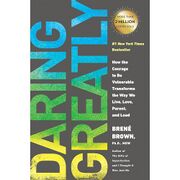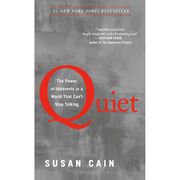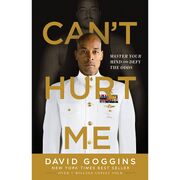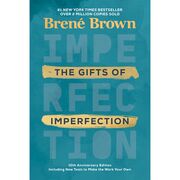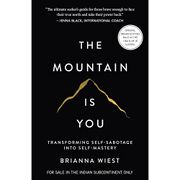The Body Keeps the Score
🍎 Healthy brain food
"As long as you keep secrets and suppress information, you are fundamentally at war with yourself."
— Bessel van der Kolk, The Body Keeps the Score (2014)
Introduction
| The Body Keeps the Score | |
|---|---|
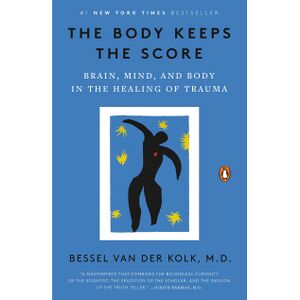 | |
| Full title | The Body Keeps the Score: Brain, Mind, and Body in the Healing of Trauma |
| Author | Bessel van der Kolk |
| Language | English |
| Subject | Trauma; Post-traumatic stress disorder; Neuroscience; Psychotherapy |
| Genre | Nonfiction; Psychology |
| Publisher | Viking |
Publication date | 25 September 2014 |
| Publication place | United States |
| Media type | Print (hardcover, paperback); e-book; audiobook |
| Pages | 445 |
| ISBN | 978-0-670-78593-3 |
| Goodreads rating | 4.4/5 (as of 6 November 2025) |
| Website | penguinrandomhouse.com |
📘 The Body Keeps the Score argues that psychological trauma reshapes both body and brain and surveys recovery paths that include neurofeedback, meditation, sports, theater, and yoga, drawing on clinical cases and laboratory findings.[1] Readers encounter explanations of the brain’s “alarm system,” stress-hormone cascades, and practical ways to restore self-regulation and safety in everyday life.[2] The book is organized in five parts across twenty chapters, framed by a prologue and an epilogue. Its voice is accessible and “engagingly written… not a textbook,” presenting a searching account of trauma and PTSD for general readers.[3] It became a long-running bestseller; Penguin reported in 2021 that it had remained on The New York Times list continuously since October 2018.[4] By April 2024 the publisher credited the book with more than three million copies sold and noted translations into more than forty languages.[5][6]
Chapter summary
This outline follows the Viking hardcover edition (25 September 2014; ISBN 978-0-670-78593-3; xvi + 445 pp.).[7][1]
I – The rediscovery of trauma
🎖️ 1 – Lessons from Vietnam veterans. On the Tuesday after the Fourth of July weekend in 1978, at the Boston Veterans Administration Clinic, a new staff psychiatrist was hanging a reproduction of Pieter Brueghel’s The Blind Leading the Blind. A Vietnam veteran named Tom walked in, exhausted from sleeplessness and on edge from flashbacks. Tom’s nights were crowded with the dead, and his days swung between numbness and sudden rages; he wanted the nightmares to stop but feared what stopping them might mean. When offered sleeping pills, he returned two weeks later and refused them, explaining that the dreams kept faith with fallen friends. Clinic files and the waiting room told similar stories from other veterans: marriages straining, jobs lost, bodies that startled at slammed doors, and intimacy gone cold. In 1980, the American Psychiatric Association named this cluster post-traumatic stress disorder, but in that first summer the patterns were still being learned case by case. The early record—echoing Abram Kardiner’s wartime observations—highlighted three repeating elements: re-experiencing, avoidance and numbing, and hyperarousal. These scenes show symptoms are not random defects but adaptations welded to memory and physiology, keeping the body ready for a world that feels unsafe. Healing begins when safety is re-established, arousal can settle, and relationships help a person remember without reliving. I need to be a living memorial to my friends who died in Vietnam.
🔬 2 – Revolutions in understanding mind and brain. Against the backdrop of the American Psychiatric Association publishing DSM-III in 1980, trauma moved from moral failing and vague “shell shock” labels to a defined syndrome with observable features. Naming PTSD around re-experiencing, avoidance, and hyperarousal gave clinicians and researchers a shared language and a way to track outcomes across hospitals and studies. This diagnostic shift came with a return to careful observation: overwhelming events fragment attention, narrow perception to threat, and disrupt the ability to feel safe with other people. Clinics adopted structured interviews and symptom scales, while labs measured heart rate, startle, and cortisol as people listened to or imagined their own trauma narratives. This two-front change—clear criteria in books, measurable signals in bodies—made it possible to compare treatments, follow cohorts, and ask which practices actually help over months and years. What emerges is a practical view of mind and brain as a prediction system skewed toward danger after trauma. Recovery depends on new experiences of safety that retrain attention and physiology so the present can register as different from the past.
🧠 3 – Looking into the brain: the neuroscience revolution. In the mid-1990s, Harvard-affiliated teams in Boston used positron emission tomography with script-driven imagery to watch what happens in the brain when people with PTSD re-experience trauma. In one 1996 study with eight patients, investigators recorded heart rate while participants listened to personal trauma and neutral scripts in the scanner. Compared with neutral scripts, traumatic scripts increased blood flow in right-sided limbic and paralimbic regions and visual cortex, and decreased flow in left inferior frontal areas associated with language (Broca’s region). Follow-up work in 1999 with women who had experienced childhood sexual abuse showed a similar pattern: stronger orbitofrontal and anterior temporal activation in PTSD, with greater decreases in anterior frontal regions, including left inferior frontal gyrus, than in non-PTSD controls. These imaging maps matched clinical observations: vivid images and sensations, a flood of emotion, and words that would not come. The scans also clarify why purely verbal processing can stall when the alarm system is firing—language circuits are underpowered while survival circuits dominate. Taken together, these studies ground the book’s thesis in physiology: trauma reorganizes networks for attention, emotion, memory, and speech. Therefore, change requires bottom-up methods that calm the alarm and re-link sensation, movement, and language, so memories can be integrated rather than re-enacted.
II – This is your brain on trauma
🏃 4 – Running for your life: the anatomy of survival. In Lower Manhattan on 11 September 2001, five-year-old Noam watched from his classroom at P.S. 234 as a jet struck the World Trade Center; his teacher led the children down the stairs and they ran to safety with their families. Within days he showed a drawing he had made the next morning, 12 September: the burning towers, people leaping, firefighters—and, at the base, a black circle he called a trampoline for anyone who might have to jump. The vignette anchors a tour of survival circuitry: when a threat erupts, the sympathetic nervous system floods the body for fight or flight, and when escape succeeds, the system can power down. If escape is blocked, the organism may go rigid or shut down, trading action for survival by submission. These shifts map onto brain architecture, contrasting fast, visual-sensory “alarm” pathways with slower, reflective networks that make meaning after danger has passed. Pounding hearts, dilated pupils, and tunneled attention mark an emergency state that is useful in the moment but toxic if prolonged. Field observations and lab measures—startle, heart rate, and stress hormones—show how quickly bodies learn to anticipate threat and how slowly they relearn safety. Noam’s scene also shows how purposeful action and a calm, present caregiver help close the stress cycle so the body can stand down. Survival responses are adaptive and must complete; when fight or flight occurs and safety returns, the nervous system resets. When action is blocked and safety never arrives, the body keeps mobilizing for a danger that is gone, embedding trauma in physiology and perception.
🔗 5 – Body-brain connections. In 1872, Charles Darwin’s The Expression of the Emotions in Man and Animals used observations of faces, postures, and visceral changes to show emotion as movement—muscles, gut, and heart acting in concert. Modern anatomy extends that view: the autonomic nervous system as a two-branch regulator that mobilizes (sympathetic) and settles (parasympathetic) the organism, and the vagus nerve as a bidirectional channel between viscera and brain. Building on Stephen Porges’s polyvagal model, myelinated ventral vagal pathways enable social engagement—prosody, eye contact, head-turning—that can calm the heart and quiet defenses, while dorsal vagal shutdown can collapse both energy and awareness. Heart-rate variability appears as a practical metric of flexibility: the more variable the intervals between beats at rest, the better the system can shift states. Clinical vignettes and studies of conditioned fear, learned helplessness, and attachment cues show that bodies read safety primarily through rhythm and relationship—tone of voice, breath, and posture—before words are processed. Interoception—or the absence of words for feelings—often reflects weak body signals reaching the brain. Breath, chanting, and synchronized movement directly modulate arousal by riding these body-to-brain pathways. Emotion and regulation are embodied first and narrated second; treatment works better when it recruits breath, movement, and relational signals, not only insight. Reconnecting bodily rhythms with awareness gives the mind something reliable to steer, turning raw alarms into sensations that can be noticed, named, and soothed.
🫥 6 – Losing your body, losing your self. Sherry arrives with sleeves pulled down over scabbed arms and a flat, high-pitched voice; years of neglect and a five-day abduction and rape during college left her oscillating between numbness and panic. Asked to try massage with a trusted colleague, she suddenly panics on the table—“Where are you?”—even as the therapist’s hands gently hold her feet; she cannot locate touch on her own body. In the office she often cannot identify common objects placed in her hand with eyes closed, a deficit echoed by Alexander McFarlane’s lab work in Adelaide on sensory integration after trauma. Functional imaging by Ruth Lanius and colleagues adds a neural map: at rest and during face-to-face cues (a friendly onscreen figure approaching head-on versus averted gaze), chronically traumatized patients show muted medial prefrontal and other self-sensing midline regions and heightened survival circuits like the periaqueductal gray. That pattern aligns with behavior—averted eyes, a flood of shame, a body braced to endure rather than relate—and with complaints of depersonalization and “no words for feelings.” Interoception is central: without clear signals from heartbeat, breath, and viscera, it is hard to know what one feels, wants, or fears, and harder still to trust touch or closeness. Practical exercises—tracking sensations, pacing breath, tolerating brief eye contact—begin stitching sensation to meaning so emotions can be felt without overwhelming. Disconnection from the body erodes agency and identity; rebuilding that connection restores a platform for choice and relationship. Healing proceeds when sensation becomes a friend rather than an enemy, allowing the self to re-inhabit the body and meet others without flipping into shutdown or alarm.
III – Minds of children
📡 7 – Getting on the same wavelength: attachment and attunement. A videotape from Beatrice Beebe shows a young mother with her three-month-old son: the baby averts his gaze to signal “enough,” the mother misses the cue and leans in louder and closer, he recoils, cries, and finally screams as she walks away crestfallen. In Ainsworth and Main’s Strange Situation, thousands of observed mother–infant pairs yielded clear patterns—secure, avoidant, ambivalent—with a substantial minority classified as disorganized; in a large sample of more than two thousand “normal” middle-class infants the split was about 62% secure, 15% avoidant, 9% anxious, and 15% disorganized. Attachment quality shows up in the body: Glenn Saxe’s team at NYU found that among severely burned children, the more secure the bond with mother, the less morphine was needed for pain control. After 9/11, Claude Chemtob followed 112 New York City children who directly witnessed the attacks; those whose mothers later developed PTSD or depression were six times likelier to show significant emotional problems and eleven times likelier to become hyperaggressive, with paternal effects transmitted via the mother’s state. Early synchrony teaches regulation and reading of signals, while chronic misattunement loads the system toward alarm. Karlen Lyons-Ruth’s Harvard cohort—videotaped at 6, 12, and 18 months, with follow-ups into adulthood—links maternal emotional withdrawal to later impulsivity, self-injury, and role-reversed relating. Together these findings anchor a simple lesson: nervous systems wire through relationships that mirror, pace, and soothe. When caregivers are frightening or unavailable, the child’s body learns danger where safety should be, and that template can dominate later life. Disorganized attachment is “fright without solution.”
🪤 8 – Trapped in relationships: the cost of abuse and neglect. Marilyn, a competent nurse, draws a terrified child under assault—an image that finally cracks her insistence that her childhood “must have been happy.” When she develops lupus of the retina, she is referred to Massachusetts Eye and Ear Infirmary and then to a Massachusetts General Hospital immunology team led by Scott Wilson and Richard Kradin. In a small lab study, they compared twelve women with incest histories (none on medication) to twelve non-traumatized controls and found abnormalities in the CD45 RA-to-RO “memory cell” ratio among survivors, signaling an immune system primed to attack even when no threat is present. Group work revealed the relational fallout: hypervigilance, rigid self-blame, and “inner maps” that cast men as predators and kindness as manipulation, illustrated by a peer named Kathy who explained why reassurance can feel like erasure. Across cases, the cost of early betrayal shows up in the body (autoimmune illness, pain), in perception (hostile attributions), and in closeness (push–pull cycles that repeat the past). Abuse and neglect condition stress systems to equate intimacy with danger, trapping people in relationships that replay helplessness. Healing requires building safe connection that can revise those inner maps, not just disputing “irrational” thoughts. Our study showed that, on a deep level, the bodies of incest victims have trouble distinguishing between danger and safety.
💞 9 – What's love got to do with it?. Beginning in 1985 at Cambridge Hospital (a Harvard teaching hospital), Judith Herman and colleagues developed the Traumatic Antecedents Questionnaire and interviewed fifty-five outpatients, coding histories on Harvard’s mainframe to quantify childhood adversity. The data show how patients accumulate five or six disparate labels over time—bipolar, major depression, ADHD, PTSD—depending on which slice of suffering a clinician notices, while the developmental story goes unaddressed. Their American Journal of Psychiatry report found that 81% of borderline-diagnosed patients in that clinic reported severe child abuse or neglect, most beginning before age seven; Martin Teicher’s neurobiological studies later mapped timing-specific brain effects. DSM categories, designed for billing and research, can harden into identity and treatment algorithms that miss trauma’s relational core. The TAQ’s practical questions—who cared for you, who kept you safe, who enforced rules—and what happens when answers are “nobody” reframe care around context. The thread is not symptom lists but ruptured attachment, dissociation, and survival strategies that later look like pathology. Effective care starts with a trauma history that honors coherence, then targets regulation and connection rather than chasing rotating symptoms. Labeling without listening leaves patients stuck; mapping lived developmental adversity makes help possible. One out of four patients we interviewed could not recall anyone they had felt safe with as a child.
🧒 10 – Developmental trauma: the hidden epidemic. Three portraits ground the argument: Anthony, age two-and-a-half, clinging, head-banging, and terrified; Maria, a 15-year-old foster youth whose turning point comes in equine therapy—“the horse I took care of” helps her tolerate connection and graduate to a four-year college; and Virginia, 13, adopted and repeatedly hospitalized after years of abuse, accumulating diagnoses that do not capture her reality. This clinical landscape contrasts with the profession’s 2011 decision not to recognize Developmental Trauma Disorder, which matters because without a developmental framework, systems medicate compliance while impairing curiosity and growth. Evidence from epigenetics and animal models fills in mechanisms—Michael Meaney’s rat-licking studies, Quebec ice-storm stress effects in human offspring, Moshe Szyf’s findings of abuse-linked methylation across dozens of genes, and Stephen Suomi’s rhesus work on temperament, stress chemistry, and caregiving. These lines converge on a relational biology: early caregiving calibrates arousal, immunity, and learning, and chronic interpersonal threat sculpts brains for survival at the expense of exploration. Field trials also operationalize DTD exposure and symptom clusters for real-world clinics. Practice implications are direct: define what is actually happening to children, embed safety and reciprocity, and measure progress beyond symptom suppression. That process starts with facing the facts.
IV – The imprint of trauma
🔎 11 – Uncovering secrets: the problem of traumatic memory. In the spring of 2002, a twenty-five-year-old Bostonian—called Julian—sought an evaluation after learning that Paul Shanley, a Catholic priest from his Newton parish, was under investigation; on 11 February 2001, while serving as a military policeman at an air force base, a Boston Globe report and a sudden image of Shanley in a doorway had sent him into panic and set off months of seizures he called “epileptic fits.” His recollections arrived as flashes—angles of a doorframe, the look of a cassock, the feel of hands—rather than an orderly story, and ordinary stressors (a girlfriend’s teasing remark, a sexual touch) could ignite full-body reactions. The Harvard Grant Study of Adult Development offers a comparison between “normal” autobiographical memory and trauma memory: men interviewed about wartime experiences in 1945/1946 told different stories by 1989/1990, whereas veterans who later developed PTSD preserved intensely consistent accounts for decades. A historical thread runs through Jean-Martin Charcot’s La Salpêtrière and Pierre Janet’s cases (such as Irène), where amnesia for facts coexisted with compulsive reenactments; Janet’s terms—dissociation and “automatisms”—name memories that return as sensations and acts, not words. Laboratory findings fit those clinics: when traumatic images and sensations reactivate, frontal language areas and time-stamping networks go offline, leaving fragments—pictures, smells, bodily feelings—without sequence. The Shanley case itself put memory on trial: after a 2005 conviction (including two counts of rape of a child) and a twelve-to-fifteen-year sentence, nearly one hundred experts filed an amicus brief challenging “repressed memory,” yet in January 2010 the Massachusetts Supreme Judicial Court unanimously upheld the verdict and allowed expert testimony on dissociative amnesia. Together, these strands show why some survivors “remember too much” in the body and “too little” in narrative form. Traumatic memories are state-dependent and sensory-laden, strengthened by arousal yet poorly integrated into time and language; recovery hinges on linking those fragments into ordinary memory within conditions of safety and self-possession.
🪨 12 – The unbearable heaviness of remembering. On the Western Front on 1 July 1916, the first hours of the Somme cost the British Army 57,470 casualties, including 19,240 dead, and “shell shock” flooded medical wards with men whose bodies carried tics, freezes, and terrors that words could not contain. Policy tried to erase the problem: General Routine Order 2384 (1917) banned the term “shell shock” from records, and the 1922 Southborough Report pushed to drop it from official nomenclature, reframing suffering as character failure; many soldiers were re-labeled “NYDN” (“Not Yet Diagnosed, Nervous”). Across countries the same pattern recurred: images and sensations persisted even when narratives were silenced, and the social urge to deny trauma left veterans—and later rape victims and abused children—caught between intolerable memories and official forgetting. These histories converge on a single observation: the body stores terror as posture, breath, and startle long after the mind loses sequence, and when reminders surface the past can feel present. Culture shapes what can be told and what must be swallowed, which in turn shapes symptoms. Because high arousal imprints vivid sensory traces but weakens integration, healing asks for conditions that let people revisit what happened without reliving it, so sensations can be woven into a coherent past instead of erupting in the present.
Background & reception
🖋️ Author & writing. Bessel van der Kolk is a psychiatrist and long-time professor at Boston University School of Medicine; he founded the Trauma Center in Brookline and now serves as president of the Trauma Research Foundation.[8] The book consolidates decades of clinical work with veterans, children, and adults, integrating neuroscience, attachment research, and psychotherapy into practical treatment chapters.[1][9] Van der Kolk draws on randomized and controlled studies he and collaborators conducted or helped catalyze (for example, EMDR versus pharmacotherapy; yoga as adjunctive care for chronic PTSD).[10] The prose favors case histories and plain language over technical monograph style, a point highlighted by UK press coverage.[3] Structurally it proceeds in five parts (twenty chapters) from the rediscovery of trauma to “paths to recovery,” with prologue and epilogue bookends.
📈 Commercial reception. Penguin reports that, as of April 2024, the book has sold over three million copies.[11] The publisher also notes it remained on The New York Times Best Seller list continuously from October 2018 (a run widely described during the pandemic era).[12][3] Penguin Random House also records translations into more than forty languages.[13]
👍 Praise. Library Journal gave the book a starred review on publication, calling it a substantial, professionally useful synthesis of trauma science and practice.[14] The The Guardian praised it as “engagingly written” and “a searching, complex account of trauma and PTSD,” rather than pop psychology.[3] Coverage in the Boston Globe underscored the book’s emphasis on broadening treatment beyond medication toward body-based and relational methods.[15]
👎 Criticism. In 2023, The Washington Post faulted the book for leaning on “uncertain science” and over-extending claims (for example, around mirror neurons and empathy), urging more careful distinctions between animal and human findings.[16] A 2023 New York Magazine profile situated the book within a wider “trauma” boom and questioned the evidentiary status of some popular practices associated with it.[17] Memory researchers have also pushed back against claims of widespread traumatic amnesia; Richard J. McNally’s review in the Canadian Journal of Psychiatry argued the evidence for “repressed” traumatic memories is weak and often misinterpreted.[18] In 2024, the Financial Times published a letter praising the book’s impact while warning that an ever-broader use of the word “trauma” can trivialize serious harm and obscure its intended message about healing.[19]
🌍 Impact & adoption. A 2024 Time profile credited the book with shifting mainstream conversation on trauma; it noted that while van der Kolk’s body-focused methods have gained traction among clinicians and in settings like schools and prisons, institutional uptake remains uneven.[20] The publisher also maintains a higher-education adoption page for the title, reflecting course use in psychology-adjacent curricula.[2] Media coverage during 2021 described it as a pandemic-era hit topping bestseller lists, mirroring its broad cultural reach.[3]
Related content & more
YouTube videos
CapSach articles
Enjoyed this page?
📚If this page The Body Keeps the Score inspired or helped you today, a small coffee helps us keep creating and sharing more. Your support truly matters.👏
References
- ↑ 1.0 1.1 1.2 "The Body Keeps the Score by Bessel van der Kolk, M.D." Penguin Random House. Penguin Random House. Retrieved 21 October 2025.
- ↑ 2.0 2.1 "The Body Keeps the Score (Higher Education)". Penguin Random House Higher Education. Penguin Random House. Retrieved 21 October 2025.
- ↑ 3.0 3.1 3.2 3.3 3.4 Williams, Zoe (20 September 2021). "Trauma, trust and triumph: psychiatrist Bessel van der Kolk on how to recover from our deepest pain". The Guardian. Retrieved 21 October 2025.
- ↑ "The Body Keeps the Score: how a book about trauma is transforming readers' lives". Penguin Books UK. Penguin Books. 20 July 2021. Retrieved 21 October 2025.
- ↑ "Bessel van der Kolk". Penguin Books UK. Penguin Books. April 2024. Retrieved 21 October 2025.
- ↑ "The Body Keeps the Score (US edition page)". Penguin Random House Canada. Penguin Random House Canada. Retrieved 21 October 2025.
- ↑ "The body keeps the score : brain, mind, and body in the healing of trauma". WorldCat. OCLC. Retrieved 21 October 2025.
- ↑ "Bessel Van Der Kolk – CV". Trauma Research Foundation. Trauma Research Foundation. Retrieved 21 October 2025.
- ↑ "Bessel van der Kolk – Biography". BesselVanDerKolk.com. Trauma Research Foundation. Retrieved 21 October 2025.
- ↑ "2023 Update of the Evidence Base for the PTSD" (PDF). Agency for Healthcare Research and Quality (AHRQ). U.S. Department of Health and Human Services. 1 September 2023. Retrieved 21 October 2025.
- ↑ "Bessel van der Kolk". Penguin Books UK. Penguin Books. April 2024. Retrieved 21 October 2025.
- ↑ "The Body Keeps the Score: how a book about trauma is transforming readers' lives". Penguin Books UK. Penguin Books. 20 July 2021. Retrieved 21 October 2025.
- ↑ "The Body Keeps the Score (US edition page)". Penguin Random House Canada. Penguin Random House Canada. Retrieved 21 October 2025.
- ↑ "The Body Keeps the Score: Brain, Mind, and Body in the Healing of Trauma". Library Journal. Library Journal. 1 October 2014. Retrieved 21 October 2025.
- ↑ Bailey, Meredith C. (13 September 2014). "Are there better ways to treat traumatic stress?". The Boston Globe Magazine. Retrieved 21 October 2025.
- ↑ Martin, Kristen (2 August 2023). "'The Body Keeps the Score' offers uncertain science in the name of self-help. It's not alone". The Washington Post. Retrieved 21 October 2025.
- ↑ Carr, Danielle (31 July 2023). "How Trauma Became America's Favorite Diagnosis". New York Magazine (Intelligencer). Retrieved 21 October 2025.
- ↑ "Debunking myths about trauma and memory". PubMed. U.S. National Library of Medicine. 2005. Retrieved 21 October 2025.
- ↑ Hearn, Kelly (28 June 2024). "Debt of gratitude due for raising trauma awareness". Financial Times. Retrieved 21 October 2025.
- ↑ "People Still Misunderstand Trauma, Says 'Body Keeps the Score' Author Bessel van der Kolk". Time. 18 July 2024. Retrieved 21 October 2025.

